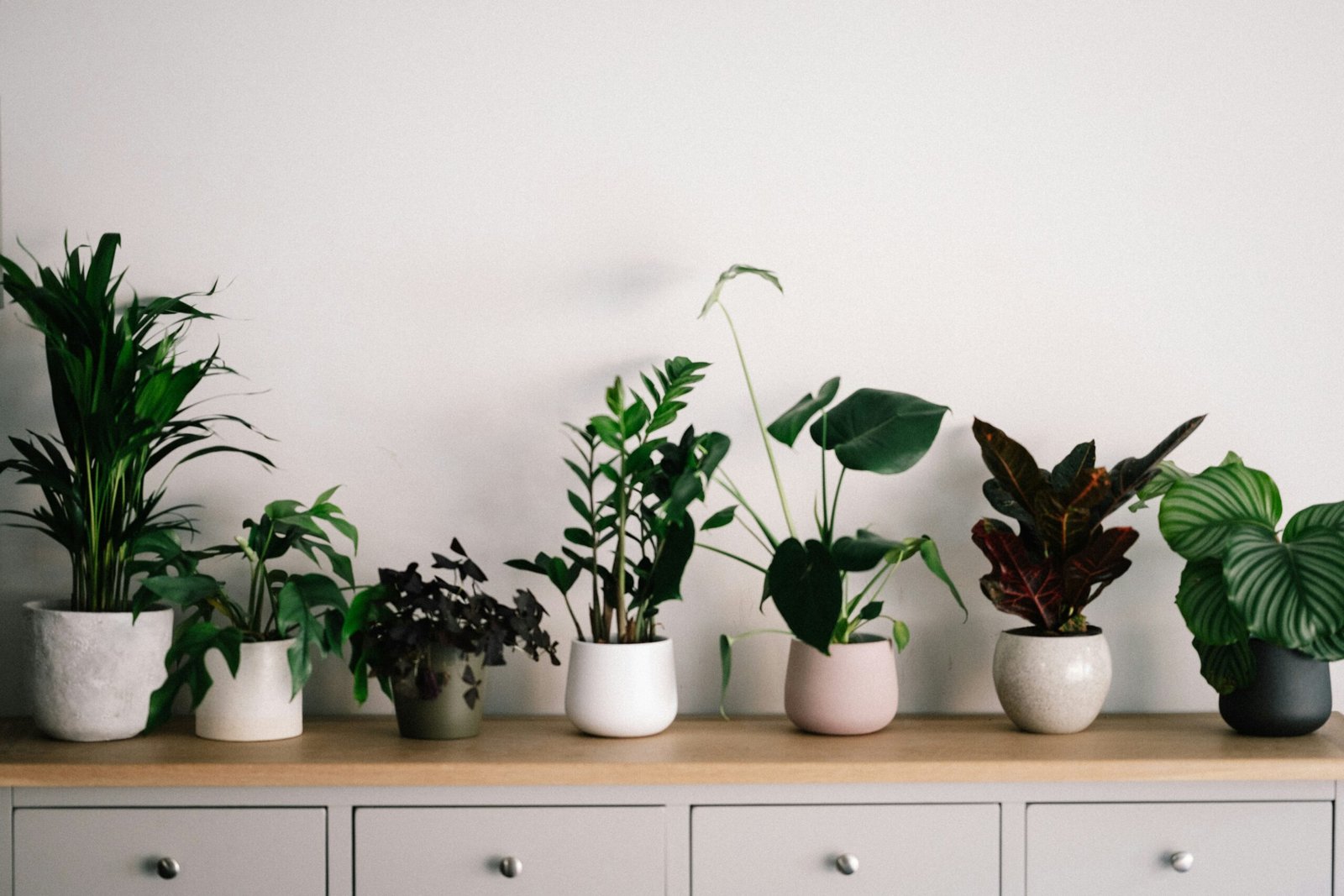20 Indoor Plants to Grow in Pakistan
Introduction to Indoor Gardening in Pakistan
Indoor gardening has gained significant popularity in Pakistan, particularly among urban dwellers, where limited space and environmental factors can affect traditional gardening practices. The benefits of incorporating indoor plants into homes are numerous and particularly relevant to the unique climate and urban landscape of Pakistan. First and foremost, indoor plants are known to purify the air by filtering harmful toxins, thereby improving indoor air quality. This is especially beneficial in cities where pollution levels can be high and natural green spaces may be limited.
Furthermore, the presence of indoor plants can enhance the aesthetic appeal of any living space. With a diverse range of species suited to Pakistan’s climate, individuals can choose from vibrant foliage and flowers to create visually appealing interiors. The act of nurturing plants also adds a living element to spaces that might otherwise feel sterile and uninspired. Indoor gardening has been observed to foster a greater connection to nature, promoting a soothing atmosphere that can reduce stress and improve overall mental health.
As more people in Pakistan embrace the concept of indoor gardening, it is crucial to acknowledge the accessibility of starting this fulfilling hobby. Beginners can start their indoor gardening journey with low-maintenance plants that thrive in average indoor conditions. Options such as snake plants, pothos, and peace lilies are ideal for those new to caring for plants, as they require minimal care yet provide substantial benefits. Moreover, utilizing available resources—whether it be online tutorials or local gardening groups—can enhance one’s knowledge and skills. By understanding the basics of indoor gardening, Pakistani urban residents can create a greener, healthier, and more aesthetically pleasing environment in their homes.
Top 20 Indoor Plants Suited for Pakistani Conditions
Indoor gardening in Pakistan can be both rewarding and aesthetically pleasing, especially when selecting plants that thrive in the region’s unique climate. Below, we present a curated list of 20 indoor plants that are well-suited for various indoor conditions in Pakistan. Each plant is accompanied by essential information to help you make an informed choice.
1. Snake Plant (Sansevieria trifasciata)
Tough and drought-tolerant, this attractive plant needs indirect light and minimal watering.
2. Peace Lily (Spathiphyllum)
This flowering plant prefers low light but requires consistent moisture. Keep it away from direct sunlight.
3. Pothos (Epipremnum aureum)
Known for its trailing vines, this plant thrives in a variety of light conditions and tolerates occasional neglect.
4. Spider Plant (Chlorophytum comosum)
Easy to care for, spider plants do well in bright, indirect sunlight and enjoy being watered moderately.
5. ZZ Plant (Zamioculcas zamiifolia)
This hardy plant thrives in low light and requires infrequent watering, making it ideal for beginners.
6. Rubber Plant (Ficus elastica)
With shiny green leaves, it prefers bright, indirect sunlight and regular watering but can tolerate drought.
7. Dracaena (Dracaena spp.)
These plants are adaptable, thriving in low to bright light. Water them when the topsoil is dry.
8. Chinese Evergreen (Aglaonema)
This resilient plant flourishes in low light and prefers humid conditions, making it perfect for indoor environments.
9. Fern (Nephrolepis exaltata)
A great choice for humid areas, ferns prefer indirect light and consistently moist soil.
10. Ivy (Hedera helix)
Ivy enjoys bright, indirect sunlight and should be watered when the top inch of soil feels dry.
11. Fiddle Leaf Fig (Ficus lyrata)
This trendy indoor tree requires bright indirect light and regular watering, thriving in well-drained soil.
12. Parlor Palm (Chamaedorea elegans)
This palm flourishes in low light and enjoys consistent moisture, making it an excellent indoor option.
13. Money Plant (Pothos)
Commonly associated with good luck, it thrives in low light and is easy to propagate, enjoying occasional watering.
14. Monstera Deliciosa
This unique plant needs bright, indirect light. Water when the soil is dry to maintain its lush foliage.
15. Calathea (Calathea spp.)
Known for its stunning leaves, it thrives in humidity and indirect sunlight, requiring regular watering to retain moisture.
16. Aloe Vera (Aloe barbadensis miller)
This succulent needs bright light and infrequent watering, making it a practical yet attractive choice.
17. Boston Fern (Nephrolepis exaltata)
Boston ferns require indirect light and high humidity, thriving in moist soil.
18. Cast Iron Plant (Aspidistra elatior)
Sought for its resilience, it does well in low light and is forgiving with inconsistent watering.
19. Nerve Plant (Fittonia spp.)
With colorful veins, this plant thrives in humid environments and indirect light, requiring regular watering.
20. Chinese Money Plant (Pilea peperomioides)
This unique plant enjoys bright, indirect light and should be watered when the topsoil is dry, ideal for indoor settings.
Each of these plants offers something unique and can enhance indoor spaces in Pakistan. By understanding their specific light, water, and care requirements, you can cultivate a vibrant indoor garden that flourishes throughout the year.
Care and Maintenance Tips for Indoor Plants
Maintaining indoor plants requires a systematic approach that aligns with the climate conditions observed in Pakistan. One vital aspect to consider is the watering schedule. Most indoor plants prefer their soil to dry out slightly between watering sessions. A general guideline is to check the soil moisture by inserting a finger about an inch deep; if it feels dry, it’s time to water. Overwatering is a common mistake that can lead to root rot, so be mindful of the drainage in your pots.
Fertilization is another key component in promoting healthy growth. Indoor plants typically require feeding during the growing season, which spans from spring to early summer. Using a balanced, water-soluble fertilizer every four to six weeks can provide necessary nutrients. It is essential to follow the recommended dosage as excess fertilizer can harm the plant instead of helping it. Additionally, consider using organic alternatives which can be gentler on your plants and the environment.
Pest control is crucial in identifying and addressing problems before they escalate. Regularly inspect your plants for signs of pests such as aphids, spider mites, or mealybugs; these can frequently affect indoor plants. If found, consider using insecticidal soap or neem oil, which can be effective and less toxic options. Furthermore, maintaining proper humidity levels can deter many common pests.
Proper lighting is another critical factor for the health of indoor plants. Most indoor plants thrive in indirect sunlight; thus, placing them near a window with filtered light is generally ideal. However, it’s important to be cautious of direct sunlight, which may scorch leaves. Regularly adjusting the location of plants in accordance with seasonal changes in sunlight will ensure they receive adequate light throughout the year.
Lastly, common mistakes include neglecting to repot plants when they become root-bound and overlooking the need for cleaning leaves. Dust can accumulate on leaves, obstructing photosynthesis. Regular care and attention to these elements will promote healthy and thriving indoor plants.
Creating the Perfect Indoor Environment for Plants
Creating a suitable indoor environment for nurturing plants in Pakistani homes requires attention to several vital factors including humidity, temperature, and air circulation. The distinct climate variations across Pakistan mean that each household may require tailored approaches to indoor gardening. Ensuring that the indoor climate complements plant growth is essential for cultivating thriving greenery.
Humidity levels play a significant role in the health of indoor plants. Most houseplants, particularly tropical varieties, thrive in humidity levels of 40% to 60%. Using humidifiers or placing shallow trays filled with water and pebbles beneath plants can help maintain this desirable humidity range. Grouping plants together can also harness their collective transpiration to raise the surrounding humidity, creating a microclimate favorable for growth.
Temperature is another important consideration. Most indoor plants prefer temperatures between 18°C and 24°C. It is important to avoid placing plants near drafts or direct heat sources, which can cause stress and hinder growth. By keeping them in a stable environment, their health and longevity may improve significantly. Ensuring that day and night temperatures do not fluctuate dramatically is crucial for nurturing robust indoor flora.
Proper air circulation is equally essential for the well-being of houseplants. Stagnant air can lead to problems such as fungal diseases or pest infestations. To combat this, periodically rotating the plants helps ensure they receive even air exposure. Additionally, using plant stands can elevate plants, improving airflow and enhancing their visibility, thus serving a dual purpose of decor enhancement.
Finally, integrating indoor gardening into home decor can play a crucial role in maximizing the aesthetic and practical benefits of indoor plants. Strategically placing pots of varying heights, textures, and colors not only brings life to a space but can also purify the air. Thoughtful arrangements create focal points that uplift the overall ambiance, contributing to a calming and refreshing home environment.




Post Comment